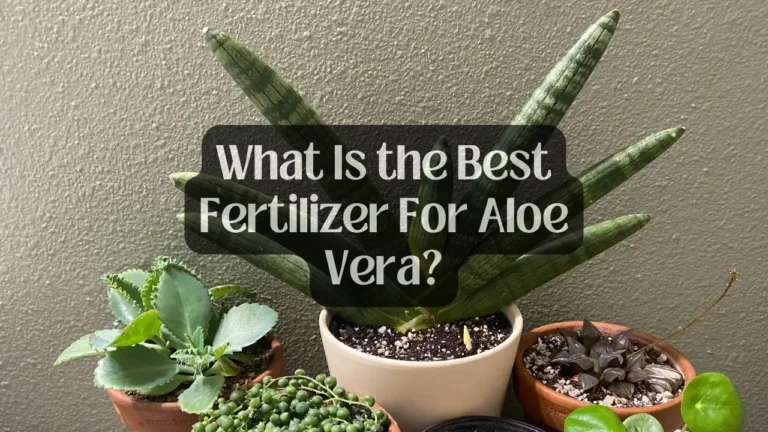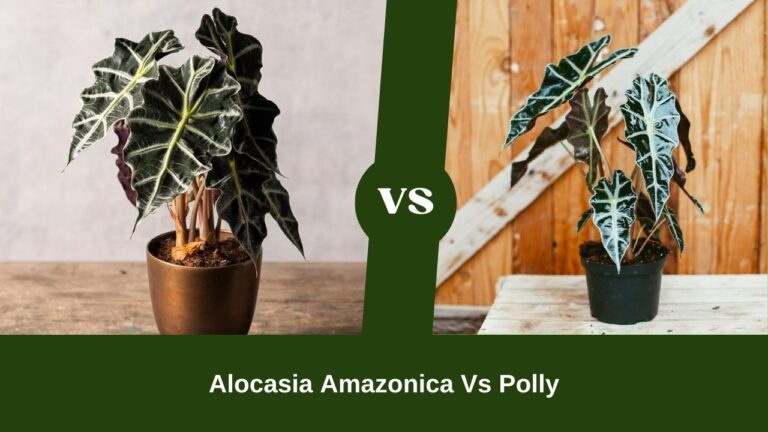18 Indoor Herb Garden Ideas That Will Make Your Cooking Shine (Don’t Miss #3!)
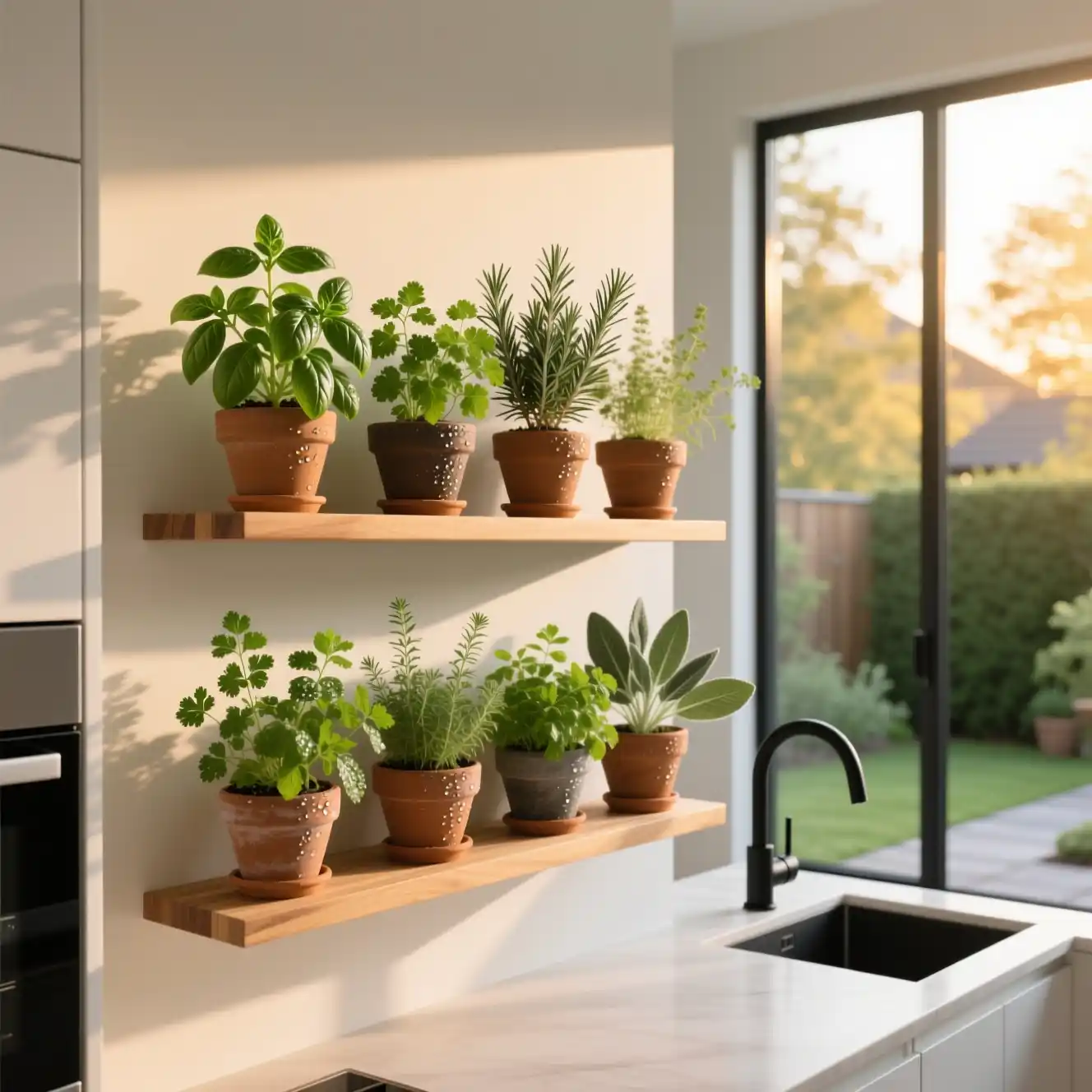
Transforming your kitchen with an indoor herb garden is not just about aesthetics; it’s about enhancing your culinary experience.
Imagine reaching for fresh basil or fragrant mint as you whip up your favorite dishes. Indoor herb gardens not only add a pop of greenery to your kitchen but also allow you to have fresh, flavorful herbs at your fingertips.
Insider Tips for Indoor Herb Gardens
Imagine a kitchen or corner of your home bursting with fresh herbs, organized in stylish, space-saving ways that elevate your cooking and add a vibrant, green touch to your space. These budget-friendly indoor herb garden ideas will transform your home, perfect for small apartments or large kitchens, making your culinary creations shine with fresh flavor.
- Mason Jar Wall Planters: Mount mason jars on a wooden board with hose clamps for a rustic, vertical herb garden to grow basil or parsley. It’s like your wall’s sprouting a charming, edible display.
- Repurposed Tin Can Pots: Paint old tin cans in pastel colors and place them on a windowsill for thyme or cilantro, blending quirky style with practicality. It feels like your kitchen’s recycling with fresh flair.
- Tiered Plant Stand: Use a small, thrifted tiered stand to hold pots of rosemary or mint, maximizing vertical space with a chic, layered look. It’s like your herbs are climbing a stylish green tower.
- Hanging Rope Planters: Suspend ceramic pots with macramé ropes near a window for oregano or chives, adding boho charm and saving counter space. It’s like your herbs are floating in a cozy, green oasis.
- Magnetic Herb Jars: Attach small magnetic pots to a fridge or metal board for dill or tarragon, keeping herbs handy with a modern twist. It feels like your kitchen’s sticking to clever, fresh vibes.
- Upcycled Wooden Crate: Line a thrifted wooden crate with plastic and plant a mix of herbs like sage and mint for a rustic, all-in-one garden. It’s like your kitchen’s nesting herbs in farmhouse elegance.
- Self-Watering Pots: Use budget-friendly self-watering pots for low-maintenance herbs like parsley, perfect for busy cooks. It’s like your herbs are thriving with effortless, culinary-ready charm.
In this article, we’ll explore 18 creative indoor herb garden ideas that will elevate your cooking game. Each idea is designed to inspire, whether you have a spacious kitchen or just a small windowsill. Get ready to bring a burst of flavor into your dishes, and don’t forget to check out our favorite idea at #3!
Vertical Garden Magic

Credit: thesecretlifeofplants
Vertical gardens are all the rage, and for good reason! They maximize space and add a stunning visual element to your kitchen.
Imagine a wall adorned with lush greenery, with pots stacked vertically to create a beautiful, organized herb display. This method is perfect for small kitchens or apartments where counter space is limited.
– Space-Saving: Vertical gardens utilize wall space effectively, keeping your countertop clutter-free.
– Aesthetic Appeal: They turn a plain wall into a living work of art.
– Easy Access: Herbs are at eye level, making them easy to snip as needed.
– DIY Potential: You can create your vertical garden using repurposed materials like wooden pallets or old shelves.
Vertical gardens can hold a variety of herbs, from basil and parsley to mint and cilantro, making them a versatile option. Just ensure they receive adequate sunlight and water, and you’ll have a thriving indoor herb garden that’s as functional as it is beautiful.
Windowsill Wonderland

Credit: zoafml
A windowsill garden is a classic choice for indoor herb gardening. It’s simple, effective, and requires minimal setup.
Placing pots of herbs right on your kitchen windowsill allows them to soak up natural sunlight, which is essential for growth. This setup is perfect for herbs like basil, chives, and thyme that thrive in sunny spots.
– Natural Light: Ensure your herbs receive at least 6 hours of sunlight daily.
– Choose the Right Pots: Opt for pots with good drainage to prevent overwatering.
– Mix and Match: Combine different herbs in one long planter for a colorful and aromatic display.
– Regular Harvesting: Trim your herbs regularly to encourage new growth and keep them healthy.
A windowsill garden not only beautifies your space but also gives you the freshest ingredients for your meals. Plus, it’s a great way to bring a bit of nature indoors, making your cooking experience even more enjoyable.
Mason Jar Herb Garden

Credit: monikakerdov
Mason jars aren’t just for canning; they make charming herb planters too! This trendy look adds a rustic touch to your kitchen.
Using mason jars allows for creative displays and easy access to fresh herbs. You can place them on a shelf, hang them, or even use them as a centerpiece on your dining table.
– Labeling: Use chalkboard labels on jars to identify each herb easily.
– Watering: Be mindful of how much water you put in; mason jars can hold moisture well, so avoid overwatering.
– Layering: Create layers with gravel and soil in the jar for better drainage.
– Personalized Touch: Decorate the jars with twine or paint for a personal flair.
Mason jar herb gardens are not only practical but also a delightful conversation starter, perfect for any kitchen setting.
Smart Herb Garden Kits

Credit: dawnygirl1
For those who love technology, smart herb garden kits are a game-changer. These kits often include built-in lights, automated watering systems, and apps to track growth.
With smart kits, even the busiest home cooks can enjoy fresh herbs with minimal effort. They’re perfect for beginners or anyone who wants the convenience of an indoor garden without the hassle.
– Easy Setup: Most kits come ready to go right out of the box, with everything you need.
– Automated Care: Many kits water your herbs for you, ensuring they’re never over or under-watered.
– Space Efficient: Smart gardens are designed to fit seamlessly into your kitchen decor.
– Educational: Some kits offer tips and guides through apps to improve your gardening knowledge.
Smart herb garden kits bridge the gap between gardening and technology, making it easier than ever to enjoy the benefits of fresh herbs in your cooking.
Creative Container Gardening

Credit: zillsama
Think outside the pot! You can use almost any container to grow herbs, adding a unique touch to your kitchen.
Old tin cans, wine crates, or even decorative bowls can serve as quirky herb planters. This approach adds personality to your indoor garden while recycling items you already have.
– Drainage: Ensure your containers have drainage holes; if not, drill some before planting.
– Mix of Sizes: Use containers of different sizes for visual interest.
– Themed Gardens: Create a theme like a Mediterranean herb garden with rosemary, thyme, and oregano in matching containers.
– Fertile Soil: Use high-quality potting soil to give your herbs the best start.
Creative container gardening is a fun way to personalize your indoor herb garden, allowing your creativity to shine through while providing fresh herbs for your culinary adventures.
Hanging Herb Gardens

Credit: fierytigerlily
Hanging gardens are a fun and stylish way to incorporate herbs into your kitchen. These can be installed in small spaces and are visually striking.
You can use a variety of hanging pots or a tiered planter to create a beautiful cascade of herbs that spices up your kitchen atmosphere.
– Height Matters: Hang them at eye level for easy access and aesthetic appeal.
– Variety: Mix different herbs in one hanging unit for a delightful display.
– Water Management: Ensure they are secured properly to avoid spills.
– Placement: Choose a spot that receives ample sunlight for optimum growth.
Hanging herb gardens not only save space but also create a unique focal point in your kitchen, making cooking and dining more enjoyable.
Herb Ladder Displays

Credit: mmn1920
Using a ladder as a plant stand is a clever way to display your herbs while adding a rustic touch to your kitchen.
This idea allows you to create a multi-level herb garden that’s both functional and decorative. You can place small pots on the steps, turning an ordinary ladder into a unique herb display.
– Stability: Ensure the ladder is stable and securely positioned.
– Interchangeable: You can easily change the herbs as seasons change.
– Grouping: Group herbs with similar sunlight and water requirements on the same rung for easy maintenance.
– Decorative Touch: Add decorative items to the ladder to personalize it further.
Herb ladder displays not only utilize vertical space but also create an eye-catching feature that enhances your kitchen’s charm.
Elevate your cooking with a rustic herb ladder! Not only does it save space, but it also brings a touch of charm to your kitchen – plus, it’s as interchangeable as your favorite recipes!
Tiered Planters for Maximum Impact

Credit: mackmoore2004
Tiered planters are perfect for maximizing your indoor gardening space while providing a stunning display.
These planters allow you to grow multiple types of herbs in one compact area, making them ideal for kitchens with limited counter space. The tiered design ensures that each herb gets enough sunlight.
– Optimal Sunlight: Ensure the top tier doesn’t shade the lower ones.
– Easy Harvesting: Being able to reach all levels makes harvesting simple.
– Aesthetic Appeal: They create a beautiful layered effect that enhances the kitchen’s decor.
– Mix and Match: Combine herbs with flowers for a more colorful display.
Tiered planters bring both functionality and beauty to your kitchen, making them an excellent choice for herb gardening enthusiasts.
Rustic Wooden Crates

Credit: toomuchtimehome
Wooden crates offer a charming rustic aesthetic while providing ample space for your herbs.
These crates can be stacked or placed in various configurations to create an inviting indoor garden. They’re perfect for those who love a farmhouse look in their kitchen.
– Customization: Stain or paint the crates to match your kitchen decor.
– Drainage: Ensure proper drainage by lining the bottom with small rocks or using potting trays.
– Group Herbs: Place complementary herbs together for a cohesive look.
– Mobility: Use wheeled crates for easy mobility when rearranging.
Rustic wooden crates combine style and functionality, making them a delightful addition to any indoor herb garden.
Transform your kitchen with rustic wooden crates – the perfect home for your indoor herb garden. Embrace the farmhouse charm and watch your cooking shine with every fresh herb at your fingertips!
Functional Herb Wall Art

Credit: cclaireroberts
Why not make your herb garden a part of your kitchen decor? Herb wall art combines functionality with creativity.
Using decorative wall-mounted planters, you can grow herbs while adding a touch of art to your kitchen. This idea is perfect for those who want to make a statement with their indoor gardening.
– Design Choices: Choose planters that match your kitchen theme.
– Positioning: Hang them at an accessible height for easy harvesting.
– Mixing Mediums: Use different materials like metal, wood, or ceramic for visual interest.
– Seasonal Changes: Change the herbs with the seasons for a fresh look.
Functional herb wall art not only spices up your cooking but also adds a vibrant and decorative element to your kitchen walls.
Repurposed Containers

Credit: hollyinness
Get creative with repurposed containers like old teacups, tin cans, or even wine bottles for your herb garden!
Using unique containers adds character to your indoor garden while helping the environment by reducing waste. These quirky planters can become conversation starters in your kitchen!
– Drainage: Make sure to poke holes in the bottom for proper drainage.
– Personal Touch: Paint or decorate the containers to match your style.
– Grouping: Arrange different containers together for a charming display.
– Lightweight Options: Opt for lighter materials for easy rearrangement.
Repurposed containers add a fun and personalized touch to your indoor herb garden, making it as unique as you are.
Sustainable Herb Gardens

Credit: tuppermom6
Consider creating a sustainable herb garden using organic soil and natural fertilizers to promote healthy growth.
Sustainable gardening practices not only benefit your herbs but also the environment. This method encourages biodiversity and reduces the need for chemical fertilizers.
– Organic Choices: Use organic seeds and soil to keep your garden chemical-free.
– Composting: Start a small compost bin to feed your herbs with natural nutrients.
– Water Conservation: Implement a drip irrigation system to conserve water.
– Native Plants: Consider planting native herbs that require less maintenance.
Sustainable herb gardens are not just good for your kitchen—they’re good for the planet, creating a positive impact while you enjoy fresh herbs in your cooking.
Latest Posts
- 20 Corner Pergola Ideas That’ll Transform Your Outdoor Space into a Cozy Retreat!

- 20 Covered Pergola Ideas to Keep You Cool and Stylish All Summer Long!

- 19 Cozy Deck Pergola Ideas for Your Ultimate Garden Retreat
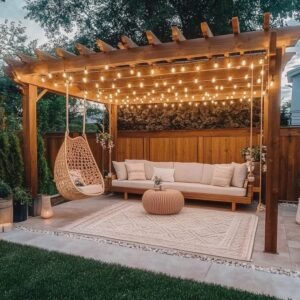
- 12 Low-Maintenance Small Perennial Garden Ideas for Busy Gardeners!
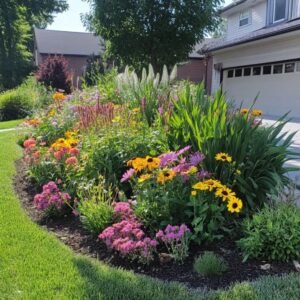
- 20 Small Herb Garden Ideas for Indoor and Outdoor Spaces!
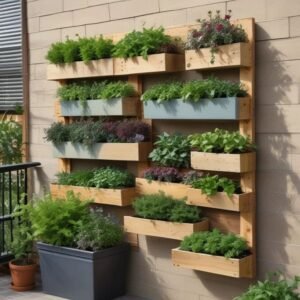
- 15 Eco-Friendly Mulch Landscaping Ideas for a Sustainable Front Yard!
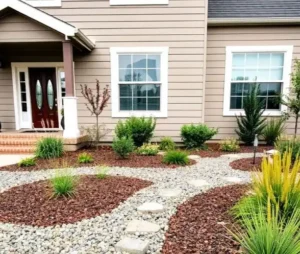
Aromatic Herb Bundles

Credit: ktlin
Create aromatic herb bundles by grouping your favorite herbs together. This not only looks beautiful but also allows for easy harvesting.
Hanging bundles of herbs can add a rustic charm to your kitchen while keeping them within easy reach.
– Drying: Use these bundles for drying herbs, preserving their flavor for later use.
– Mixing Aromas: Pair complementary herbs for a delightful scent.
– Display: Hang them near your cooking area for easy access.
– Safety: Ensure they’re securely tied to avoid falling.
Aromatic herb bundles are a practical and lovely way to keep your herbs fresh and flavorful, enhancing both your cooking experience and your kitchen decor.
Bundle up your favorite herbs for a fragrant touch in your kitchen! Not only do they look stunning, but they also make harvesting a breeze. Elevate your indoor herb garden with aromatic charm today!
Indoor Herb Shelf

Credit: bruzas
An indoor herb shelf can serve as an elegant solution for displaying and organizing your herbs.
Choose a dedicated shelf in your kitchen where you can arrange herbs by type or size, creating a visually appealing and functional setup.
– Organization: Use small pots or trays to keep things tidy and organized.
– Stylish Design: Choose a shelf that matches your kitchen decor for a cohesive look.
– Layered Heights: Use varying heights of pots for added visual interest.
– Easy Access: Keep frequently used herbs at the front for quick access.
An indoor herb shelf not only organizes your herbs but also allows you to enjoy their beauty while cooking, making your kitchen feel more inviting.
Greenhouse Effect

Credit: isavale
If you’re serious about your herbs, consider creating a mini greenhouse in your kitchen.
This setup allows you to control the environment for optimal growth, providing the perfect humidity and temperature for your herbs.
– Humidity Control: Keep herbs hydrated without overwatering.
– Temperature Regulation: Ensure a stable growing environment.
– Visual Appeal: A mini greenhouse can be a beautiful focal point in your kitchen.
– Plant Variety: Experiment with different herbs and plants for a diverse garden.
A mini greenhouse can transform your indoor gardening experience, allowing you to grow a variety of herbs with ease, even in less-than-ideal conditions.
Create a mini greenhouse in your kitchen and watch your indoor herb garden thrive! With the right humidity and temperature, you’ll not only elevate your cooking but also add a stunning focal point to your space.
Herb Wall Panels

Credit: sophietucker95
Wall panels designed specifically for herb gardening are a modern and stylish option for your kitchen.
These panels are often vertical systems that allow you to plant multiple herbs in a compact space, creating a lush and green backdrop in your kitchen.
– Easy Installation: Many systems come ready to install with clear instructions.
– Minimal Space Requirement: Ideal for small kitchens or apartments.
– Irrigation Options: Some panels include built-in irrigation systems for low maintenance.
– Aesthetic Appeal: They provide a stunning living wall feature.
Herb wall panels are perfect for those looking to integrate gardening into their decor, combining style and functionality seamlessly.
Themed Herb Gardens

Credit: jora7
Create themed herb gardens by grouping herbs that complement each other in terms of culinary uses.
For instance, a Mediterranean theme could include rosemary, thyme, and oregano, while a cocktail herb garden might feature mint, basil, and lemon balm.
– Culinary Pairing: Group herbs that work well together in recipes for easy access.
– Visual Cohesion: Themed gardens create a visually pleasing arrangement.
– Seasonal Changes: Rotate herbs seasonally for freshness in your cooking.
– Educational: Learn about the different herbs and their uses as you cultivate them.
Themed herb gardens not only enhance your cooking but also make gardening more fun and engaging, allowing you to explore new flavors and recipes.
Community Herb Garden

Credit: GreenGlowGarden01
If you have the space, consider establishing a community herb garden with friends or neighbors.
This shared experience brings people together while promoting sustainability and a love for gardening. You can share the harvest, enjoy each other’s company, and learn from one another.
– Shared Responsibility: Distributing care tasks makes it easier to maintain.
– Diverse Knowledge: Learn from each other’s gardening experiences.
– Bountiful Harvests: Enjoy a wider variety of herbs than you might grow alone.
– Community Connection: Strengthen bonds with your community through shared interests.
A community herb garden fosters collaboration and connection, making gardening a joyful and collective experience that enriches everyone involved.
Frequently Asked Questions
Q. What are the best herbs to grow in an indoor herb garden?
Ans. When starting your indoor herb garden, some of the best herbs to grow include basil, mint, parsley, cilantro, and chives. These herbs thrive well indoors and can be used frequently in your cooking, ensuring you have fresh flavors at your fingertips.
Additionally, consider your cooking style; if you love Italian dishes, basil and oregano are must-haves, while mint and cilantro work wonders in Asian cuisine!
Q. How much sunlight do indoor herbs need?
Ans. Most indoor herbs require about 6 to 8 hours of sunlight each day. A sunny windowsill is often the perfect spot for your herbs to soak up those rays!
If your kitchen doesn’t get enough natural light, consider using grow lights that mimic sunlight to keep your herbs thriving year-round.
Q. What are some creative containers I can use for an indoor herb garden?
Ans. Get creative with your indoor herb garden by using a variety of containers! You can repurpose mason jars, old teacups, tin cans, or even wine crates. These unique containers not only add charm to your kitchen but also allow for a fun and personalized touch to your herb garden.
Just make sure they have drainage holes so your herbs don’t end up sitting in water!
Q. How often should I water my indoor herb garden?
Ans. Watering frequency can depend on the type of herbs you are growing, but generally, you should water your indoor herbs when the top inch of soil feels dry to the touch. A good rule of thumb is to check them once a week and adjust based on your home’s humidity and temperature.
Remember, it’s better to underwater than overwater, as most herbs prefer to be on the dry side rather than soggy!
Q. Can I use fresh herbs from my indoor garden in cooking right away?
Ans. Absolutely! One of the joys of having an indoor herb garden is that you can use your fresh herbs right away in your cooking. Just snip off what you need and add them to your dishes for an instant flavor boost.
For the best taste, try to harvest herbs in the morning when their essential oils are most concentrated; it’s a simple way to elevate your culinary creations!
Conclusion
Creating an indoor herb garden is not just a trend; it’s a lifestyle choice that enriches your cooking and enhances your living space.
From vertical gardens to creative containers, the possibilities are endless! Each idea presented here offers a unique way to enjoy fresh herbs at your fingertips, elevating your culinary creations.
We hope you found inspiration in these 18 indoor herb garden ideas. Which one will you try first? Share your favorites in the comments below!



